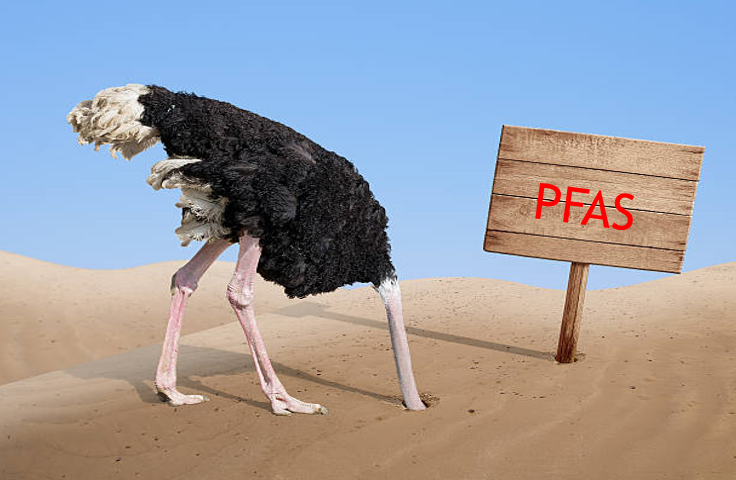by Ned Beecher, Executive Director, NEBRA
For 20 years, I've worked with reporters and journalists on their coverage of biosolids and related topics. I'm speaking here of professionals who write fact-based news or feature articles, not those who write opinion-based pieces or columns that reflect and include their personal bias and/or advocacy.
What these reporters and journalists do is important, serving as conduits of useful information, helping develop the broad public understanding of a huge variety of topics. Biosolids is an esoteric topic that most people don't think about. So it's great when a reporter wants to cover it.
Of course, the reason for media coverage is often because of some local public upset, usually because of malodors from a biosolids land application project. It's understandable that people get upset. (And we constantly urge biosolids managers to follow best practices to reduce risks of nuisance odors.) The reporter, often newly assigned to the topic, has to scramble to learn about what is largely a hidden function - wastewater treatment and the management of the resulting solids. Their job is a tough one: lots to learn and never enough time. Media deadlines are constant and harsh.
In my 20 years at this, I can only think of one or two professional journalists who entered their work on biosolids with significant bias. Most notable was one reporter, writing for a major news organization, who clearly had it in mind to skewer biosolids and all of us involved; his negative bias was palpable from start to finish. And, in the end, because of that bias, part of his coverage was formally retracted.
What I've mostly experienced is that reporters are doing their best to understand and fairly present a complicated topic. I appreciate the challenges they face. So, at the risk of appearing pushy, I present a few suggestions for reporters new to the biosolids beat, based on watching scores of media stories being developed by responsible reporters.
NOTE: While this blog post focuses on tips for reporters, I want to stress that, on the other side of the equation, there is plenty that biosolids managers can do to help the media and public. We present some such advice here.
1. Poop is fun to joke about, and there are many fine word plays. (King County, Seattle, has branded their biosolids with one: “loop,” rhymes with....) Those of us working in the field have enjoyed the jokes (some of them many times). Working with poop keeps us from taking ourselves too seriously.
But it's important, too, to recognize that managing wastewater is serious work. As George Hawkins, CEO of DC Water recently said, wastewater treatment supports every job - all that we do in modern society. We are a mere century of progress away from deadly cholera outbreaks in the U. S., and 50 years from typhoid outbreaks. And they still happen elsewhere in the world.
So don't inadvertently make humor the focus of your story, distracting your readers from thinking seriously about this topic - a topic they've probably not thought much about, but which is critical to their well-being.
2. Wastewater solids are not optional. They are a product of modern sanitation, which the British Medical Journal found to be the most important medical advance since the mid 1800s. Solids have to be managed. We can landfill solids, incinerate them, or treat and test and recycle them to soils.
3. Aim to have your coverage be a responsible and informative part of the public discussion. Managing wastewater and the resulting solids is something that we all, community by community, must figure out. Municipal leaders are working on it regularly. It is not black and white. There are trade-offs. Be sensitive to this reality.
4. Visit a wastewater treatment facility to see how biosolids are made and watch biosolids being applied to land and/or managed in other ways. You can avoid a lot of confusion about what biosolids recycling actually is by seeing it for yourself. One time I brought an NPR affiliate reporter to a land application site where a tractor was spewing small pieces of biosolids onto a hayfield. She was amazed: "I thought that when you said you 'spread biosolids,' you meant you were spreading it thick, like peanut butter on bread. There is hardly any going on that field." Yet that application was a typical amount. Many misconceptions vanish when you see something in person. Treatment plant operators and organizations like NEBRA are glad to arrange tours, even on short notice.
5. The volume of scientific information on the topic is huge. And the scientific basis for use on soils is extensive (and complex). Remember that one scientific paper does not prove anything. Scientific knowledge builds through volumes of inquiries, repeated experiments, and summaries of research and experience. Neither you, nor any of us, will master the body of knowledge on this topic - especially in the hours you have before deadline. Figure out how you will deal with this reality. We provide a summary of the basic research. Don't get caught up in coverage of a single study, and don't assume others' media coverage accurately reflects what was researched. If you're going to report on one new study, read it carefully, get other expert scientists' take on it, and evaluate it in relation to the overall scientific understanding.
6. What does it mean to present a fair and balanced story about biosolids/sewage sludge? Does it mean equal time? An equal number of words on each side? On the topic of biosolids, it is an objective fact that the preponderance of research and the majority of scientists who have done direct research on the topic accept the use of biosolids on soils in accordance with regulations. Media coverage intended to present a fair assessment of the debate should reflect this reality. Giving equal weight to every perspective is not providing a fair assessment and does a disservice to public understanding. It helps to talk with all - or as many as possible - of the key stakeholder perspectives: the farmers or other persons using biosolids, neighbors, concerned citizens, community leaders, biosolids managers, environmental or conservation concerns, state regulatory staff, research scientists, and university extension staff.
7. Consider the credentials and experience of every source you contact. Since you and your readers are relying on those sources for useful, accurate information, assess not only their perspective (everyone has bias), but also their level of understanding and experience with biosolids, soils, or other closely related topics. Don't assume that a rocket scientist is a credible expert on biosolids: scientific disciplines are highly specialized.
An extreme example of a media outlet pretending to present equal experts was a TV debate in southern California where Rufus Chaney, PhD, of the U. S. Dept. of Agriculture was on the same stage with Caroline Snyder, a PhD in Germanic Languages and Literature who opposes use of biosolids on land. Dr. Chaney has 40 years of primary research experience and has published hundreds of papers on soils, biosolids, and related topics. Dr. Snyder has no formal scientific training and no primary research experience with biosolids.
8. Words matter.
a) "Biosolids" are actually not "poop" at all. They are treated and tested wastewater solids (sewage sludges) that meet standards for recycling to soils. "Wastewater solids" ("sewage sludge") are the residues that settle out of the wastewater treatment process. "Primary solids" settle out near the beginning of the treatment process and include tiny particles of poop, food, sand, other stuff washed down drains, and microorganisms that are naturally consuming the wastes. "Secondary solids" settle out nearer to the end of the water cleaning process and are composed mostly of living and dead microorganisms that have eaten the nutrients in the wastewater. Before they can be used as biosolids on land, primary and secondary solids must go through physical, chemical, and/or biological processes that further break them down and destroy "pathogens" (disease-causing organisms).
So, in the end, biosolids are made up of complex molecules like proteins, carbohydrates, fats, cellulose, etc. (organic compounds or "organic matter") and various inorganic compounds. In the "organic matter" (stuff that contains the element carbon, C) are most of the beneficial nutrients that make biosolids a great fertilizer, such as nitrogen (N), phosphorus (P), calcium (Ca), magnesium (Mg), copper (Cu), sulfur (S), and zinc (Zn). Biosolids also contain trace amounts of other elements and chemicals that came down the sewage pipe, but those make up less than a percent or two of the total mass. And research shows that, in biosolids that meet regulatory requirements, they pose minimal risk. And the benefits to soils and crops of the nutrients and organic matter are well documented.
b) Search the Internet for "sludge" or "sewage sludge" and you will find a different perspective in comparison to searching for "biosolids." Be aware of this and seek both kinds of sources. And think about which words you use and whether or not those words reflect your bias. Learn more about the word "biosolids" and its widespread, technical use.
9. Please forgive some in the wastewater and biosolids management profession for being a bit wary of you. They shouldn't be (and we encourage them to be open, honest, helpful, and proactive), but some feel they have received negative coverage in the past. And some have been instructed to refer you to their public relations people. Talk to whomever you can, and reassure them that you will do your best to present their perspective, and, that to do so, you need to hear from them. Offer to come see their facilities and operations and hear what they have to say. If, after considerable trying, you get nowhere, contact someone else in a similar position. There are plenty of us out here very willing to talk about biosolids. It's our life's work and our passion. I'd love to talk with you.
10. Lastly, thank you for your good work.





